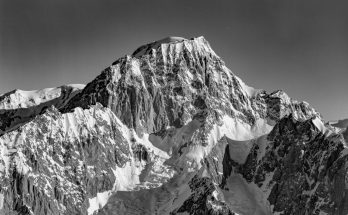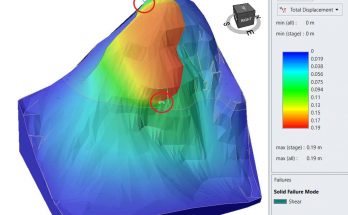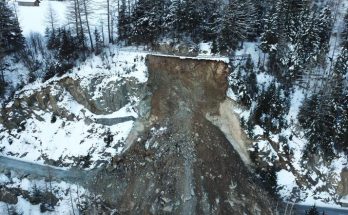Alizée Vioget
Director: Prof. Michel Jaboyedoff
Co-directors: Prof. Olivier Maquaire
Expert: MSc. Clément Michoud
The coasts’ recession is a major issue for the management of littoral regions. In this context, two coastal areas in “Calvados” and “Pays de Caux”, French Normandy, are studied by the University of Caen for several years.
The studied section of the cliffs of Bessin is about 5 km long and lies between the World War II artillery batteries of Longues-sur-Mer and Arromanches-les-Bains. The site’s lithology is mainly made of two formations: the limestones of Bessin that lie on top of the marls of Port-en-Bessin. On the coastline, the cliff’s height varies between 10 and 75 meters above sea level. The marl formation acts like an aquitard, as it is semi-impermeable. Therefore, more or less important water outflows are observable at the point of contact between the marls and the limestones.
First, the study aimed to create an up to date geomorphological map as well as a kinematic classification of the existing instabilities of the different cliff’s profiles. This part was realized with on site field measurements. Several profiles were observed depending on the type of cliff studied: sinking of limestone panels due to creeping marls at the base, overhang limestone formation, wave-cut notch, detachment, tilt, rotational rockslide, superficial rockslide etc. These several behaviors depend on the cliff’s exposure to the Channel Sea and weathering factors, morphology, presence of pebble beach etc. Thus, the coastline section was classified depending on the different morphological types observed, which influence the stability and erosion rates. Principal morphological types here are: overhang limestone formation near Cape Manvieux and rotational rockslide by creeping marls near le Chaos.
Then, the cliffs’ condition was compared to the diachronic analysis of the shoreline evolution supported by different photographic documents. This part of the study allowed to refine the spatiotemporal occurrence of the different ground movements. However, cliffs’recession evolves in successive leaps and bounds. Thus, results would not be significant unless there are long observation periods. Therefore, the documents used consisted of orthophotos and oblique aerial pictures that cover a period from 1947 to 2012. This step revealed a recession velocity of about 0.06 to 0.30 m/yr.
Finally, a complex rockslide that happened in May 2013 near Cape Manvieux has been investigated. Its kinematic and the mass volume that has moved were determined. For that purpose, a terrestrial LiDAR acquisition of the instability was performed in July 2013. LiDAR data and field observations let think that the current state of the instability was created by multiple events and is a complex mix of creeping marls and toppling of limestone destabilized by a back subvertical discontinuity which is parallel to the coastline.
The site geomorphological study associated with the diachronical analysis gave lots of information regarding the mechanisms shaping the cliffs of Bessin and their evolution. Thus, the section of interest could be cut into several transects having their own mechanisms and erosion rhythm. Hence, the event of May 2013 could be replaced in its context and described as a major magnitude event which displaced about 30’000 m3.



